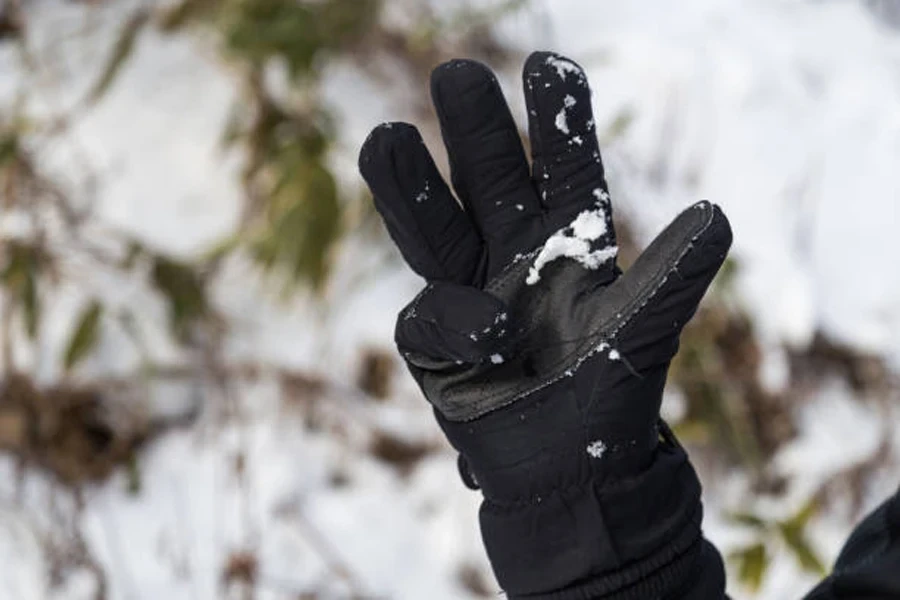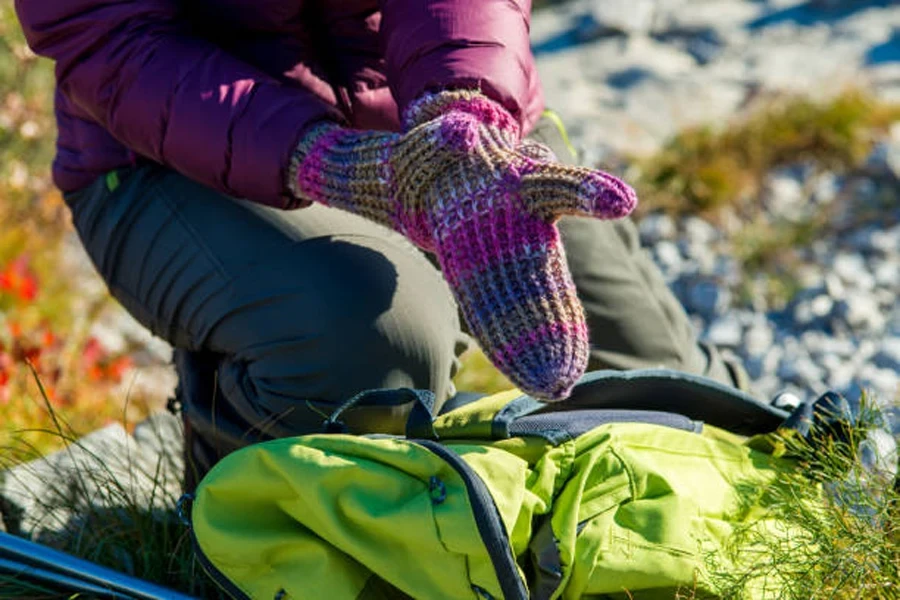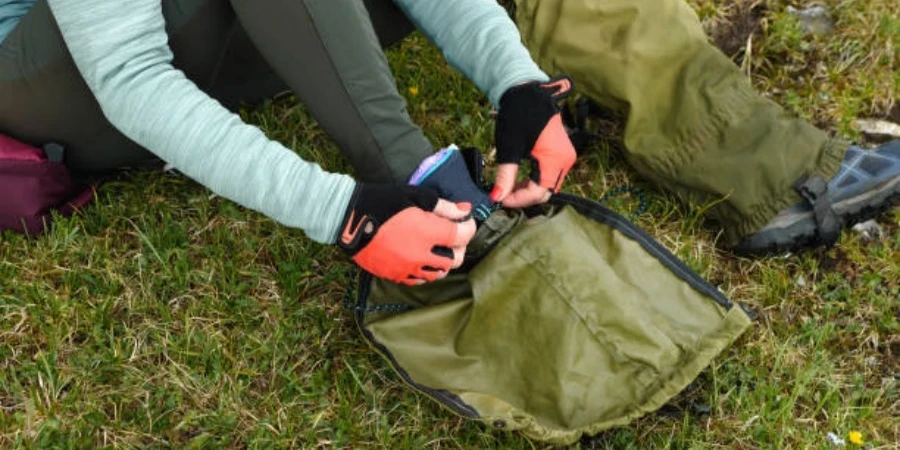Table of Contents
● Introduction
● Main types of hiking gloves and their usage
● Market trends for hiking gloves in 2025
● Key factors to consider when selecting hiking gloves
● Leading hiking gloves in 2025: Features and recommendations
● Conclusion
Introduction
The type of hiking gloves chosen will improve or harm an outdoor experience. Given the expanding array of gloves available in 2025, it’s crucial to recognize which matches the special needs of different hiking environments. From breathable gloves for gentler temps to insulated ones for colder regions, the market now offers particular options that boost comfort, protection, and performance. Whether for high-altitude climbs or wet days on the route, the right pair ensures that your hands remain warm, dry, and nimble, allowing a safer and more enjoyable time outdoors.
Main Types of Hiking Gloves and Their Usage

Insulated Gloves for Cold Weather
Insulated gloves are meant to be warm in frigid temperatures. Thinsulate, wool, and fleece absorb heat while enabling breathability from premium materials. These gloves are very helpful in extremely cold or snow-covered areas where frostbite is a concern. Synthetic insulation or natural fibers keep the gloves warm without compromising dexterity or flexibility. The protective layer these gloves offer helps hikers exploring difficult winter conditions maintain their fingers nimble even in below-zero temperatures.
Waterproof and Windproof Gloves

Hiking in wet, rainy, or windy circumstances requires waterproof and windproof gloves. Advanced fabrics like Gore-Tex provide gloves with a barrier against water while allowing breathability. This keeps outside water out of the glove and lets moisture escape. Cutting through biting winds that can quickly lower body temperature requires windproof characteristics. For people who frequently travel in damp or erratic environments, these gloves help keep hands dry and warm, preserving comfort and minimizing possible health risks.
Touchscreen-Compatible Gloves
Demand for touchscreen-compatible gloves has surged as reliance on digital tools rises. These gloves let hikers run cameras, GPS devices, or cellphones without sacrificing their hands to the cold. Using conductive materials at the fingertips allows one to swipe and tap on screens while maintaining the insulating qualities required for cold conditions. Touchscreen-compatible gloves mix the best of both worlds—warmth, and convenience—for outdoor enthusiasts who depend on technology to navigate or record events.
Lightweight and Breathable Gloves for Mild Conditions
Lightweight and breathable gloves are perfect for gentler weather, such as excursions in spring or fall. These gloves guarantee ventilation and comfort even in warm situations by using synthetic fibers, cotton, or mesh, ensuring comfort. While moisture-woking textiles keep hands dry, light structure helps to reduce overheating. In moderate temperatures, where protection from light wind or sun is required, these gloves are appropriate; nevertheless, insulation is not a top goal. Lightweight gloves give the freedom needed for longer journeys without overheating throughout seasonal changes.
Market trends for hiking gloves in 2025

Rising demand for multi-functional gloves
As buyers search for goods that will work in several contexts, it is clear that multi-functional gloves are in vogue. Consumers value utility above comfort, hence, gloves meant for flexibility in cold, damp, and windy environments are increasingly sought after. This inclination fits with a larger movement in outdoor products toward adaptability and performance.
Technological advancements in glove design
Technological developments in glove design are improving gloves using better insulation technologies and Gore-Tex and other novel materials. By bettering warmth, dryness, and comfort, these materials offer better defense against severe storms. Furthermore, using smart materials in glove production opens the path for more customized choices. This covers higher performance on long walks using enhanced ergonomics and more durability.
Consumer Preferences in 2025
Consumers gravitate toward sturdy, lightweight, ergonomic gloves that remain comfortable in different conditions. The growing popularity of particular product categories also results from the emergence of outdoor adventure culture and the impact of social media. Product trends keep changing rapidly as hiking communities post experiences and recommendations online.
Key factors to consider when selecting hiking gloves

Weather resistance
Selecting hiking gloves depends much on weather resistance. Protection of hands from severe conditions depends critically on insulation, waterproofing, and windproofing. While waterproof and windproof fabrics like Gore-Tex stop hands from becoming cold and wet in snow, rain, or wind, insulated gloves of materials like Thinsulate or wool offer warmth in freezing weather. These characteristics guarantee that hikers may enjoy their outdoor experiences independent of the conditions. Furthermore, these materials’ adaptability helps hikers to fit various environments and situations all year round.
Comfort and fit
The extended time required to wear gloves depends on ergonomics. The adjustable cuffs and flexible fit characteristics of hiking gloves help guarantee optimal comfort while preserving mobility. Even in demanding sports, a snug-fit glove that allows simple movement and ventilation helps avoid discomfort. These factors enhance the whole hiking experience so that hikers may concentrate on the exercise instead of continually changing their equipment. Comfort also helps the gloves to be durable since ill-fitting gloves can wear out fast from friction.
Durability and material quality
Hiking glove lifetime and performance are largely influenced by material choice. Advanced fabrics, synthetic textiles, and leather, among other high-performance materials, offer comfort, durability, and flexibility. For rough situations, for instance, leather is praised for its strength. Conversely, synthetic fibers are often more lightweight and offer good insulation. Advanced materials, including Cordura or ripstop textiles, boost a glove’s lifetime without adding weight, guaranteeing long-lasting use over several hiking trips.
Dexterity and flexibility
The selection of gloves depends much on dexterity. Hiking gloves shouldn’t limit motion, particularly when handling tools or doing complex tasks like knotting or equipment adjustment. Activities like climbing depend on exact motions; hence, gloves that allow fine motor control are necessary. The appropriate gloves give the wearer freedom of movement without sacrificing protection by striking a mix of warmth and flexibility.
Weight and packability
Particularly for multi-day treks or long-distance excursions, hiking gloves should also be lightweight and easy to pack. Though they still provide the required protection, lightweight gloves cut the bulk of a backpack. Whether the weather is moderate or severe, breathable fabrics and small designs guarantee that gloves don’t occupy too much room in a hiking pack, ensuring they are perfect for various situations. Packability also allows hikers to carry many kinds of gloves—insulated, waterproof, or lightweight—for varied circumstances without adding appreciable weight to their pack.
Leading Hiking Gloves in 2025: Features and Recommendations

Top Models for Cold Weather
Maintaining warmth and comfort in severe conditions depends on gloves for cold weather. Models using cutting-edge insulating materials—such as wool blends or high-performance synthesynthesizes exceptional warmth. These gloves guarantee protection against frostbite and limited dexterity for individuals on demanding winter excursions or longer trips in sub-zero weather.
Best Waterproof Gloves for All-Weather Protection
Maintaining dry hands and best performance in rainy, snowy, or windy environments depends on waterproof gloves. Gore-Tex guarantees breathability by keeping out moisture, offering all-day comfort even in the wettest situations. These gloves are preferred because of their adaptability in shielding against the weather without sacrificing dexterity.
Most Durable Gloves for Rugged Terrain
Hiking in tough conditions requires gloves to resist wear and tear from rocky terrain, deep forests, and harsh surroundings. Made from robust, premium materials like leather or reinforced synthetics, gloves provide lifespan and protection even under demanding situations. These gloves are made to be strong enough to hold through many demanding climbs.
Highly Dexterous Gloves for Active Hikers
Dexterous gloves are essential for those climbing or performing difficult chores during hikes. Combining ergonomic designs with lightweight forms with fine motor control guarantees the hiker can accurately handle equipment. These gloves are made to provide great flexibility and performance when changing climbing gear or using tools on the trail.
Conclusion
The main considerations in selecting the appropriate hiking gloves for 2025 are the type of activities, the temperature, and the materials most fit for personal demands. Gloves should be durable, warm, and flexible, whether your activities are warmer day trips, cold winter walks, or high-altitude treks. A good pair improves comfort, avoids damage, and eventually helps performance. Ensuring a flawless outdoor experience depends on investing in excellent gloves, enabling professionals to boldly assist their colleagues and clients with the greatest tools for various situations and requirements.




